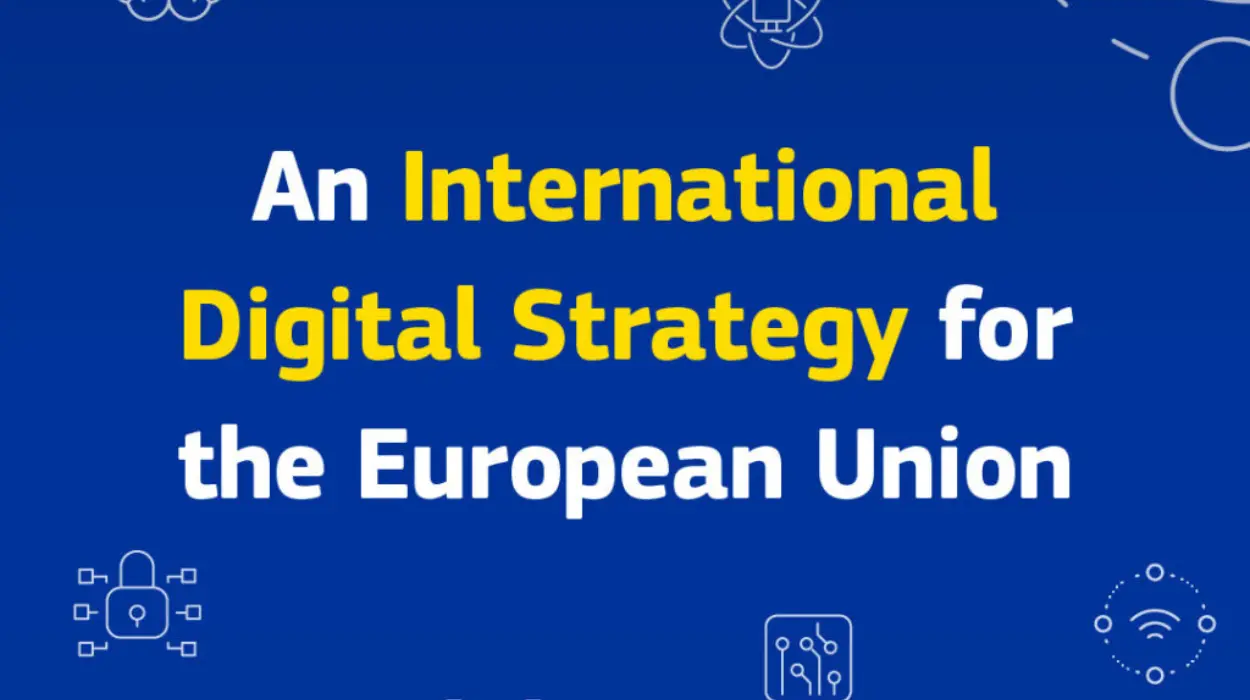Europe has taken a decisive step to assert its role in the rapidly evolving global digital landscape with the launch of its 2025 International Digital Strategy. Unveiled on June 5, 2025, by the European Commission and the European External Action Service (EEAS), this strategy marks a significant shift from a values-driven digital diplomacy to a more pragmatic, power-oriented approach focused on economic security, technological competitiveness, and resilient global partnerships.
A Strategic Shift: From Principles to Power
Historically, the European Union’s digital diplomacy emphasized exporting its regulatory values—such as data privacy, human rights, and inclusivity—through what is known as the “Brussels effect.” However, the new strategy repositions the EU to prioritize strategic power, economic security, and technological sovereignty. This means securing supply chains, investing in critical digital infrastructure like submarine cables and AI manufacturing, and linking advanced technologies explicitly to defence and security.
The strategy acknowledges the increasingly complex geopolitical environment shaped by the digital revolution and rising global tensions, including Russia’s war in Ukraine. It reflects the EU’s ambition to become a stronger, more effective player in global digital governance by balancing its traditional soft power with hard power realities.
Core Objectives of the EU’s International Digital Strategy
The strategy outlines three primary goals:
Boosting Tech Competitiveness
The EU aims to enhance its leadership in emerging technologies such as Artificial Intelligence (AI), 5G/6G networks, semiconductors, and quantum computing. This will be achieved through intensified economic and business cooperation, attracting global talent, and fostering innovation via research partnerships and investments.
Promoting Security and Resilience
Security is a cornerstone of the strategy. The EU plans to strengthen cybersecurity and cyber defence of critical infrastructure, secure ICT supply chains, and counter hybrid threats including foreign disinformation and cybercrime. The strategy also highlights the importance of trusted suppliers for dual-use technologies that have both civilian and defence applications.
Shaping Global Digital Governance
The EU commits to promoting a rules-based global digital order aligned with its fundamental values of democracy, privacy, and human rights. It seeks to influence international standards and norms through multilateral forums such as the United Nations, G7, G20, and regional bodies like the African Union and ASEAN. The strategy also introduces a new Digital Partnership Network to deepen existing alliances and establish new ones.
Expanding Global Partnerships and Investment
The EU plans to deepen digital partnerships with key like-minded countries including India, Japan, and South Korea, while largely sidelining China in its strategic calculus. It also aims to engage the Global South by offering secure digital infrastructure and public-private investment opportunities to support partner countries’ digital transitions.
A flagship initiative under the strategy is the “EU Tech Business Offer,” a modular platform that combines EU public and private sector investments to support digital infrastructure projects, AI factories, cybersecurity, and digital public services abroad. This initiative is part of the broader “Team Europe” approach, which coordinates efforts among EU institutions and member states to present a unified and strategic digital diplomacy front.
Institutional and Policy Integration
The 2025 strategy aligns digital diplomacy with other EU policy areas such as Green Diplomacy and Cyber Diplomacy to address hybrid threats and cyberattacks more cohesively. It calls for enhanced collaboration with global entities like the WTO, OSCE, and OECD to uphold democratic digital governance and prevent internet fragmentation.
While the strategy downplays previously central regulatory tools like the AI Act in favor of broader geopolitical and economic objectives, it maintains a commitment to ethical technology development and human-centric digital transformation.
Reactions and Challenges Ahead
Experts have welcomed the strategy as a promising and ambitious blueprint that responds to calls for stronger EU leadership in global digital affairs. However, they caution that its ultimate success hinges on effective implementation, coherent leadership, and balancing the EU’s internal democratic values with external strategic assertiveness.
Member states are encouraged to develop complementary digital diplomacy approaches that integrate geopolitical, economic, and development priorities. The EU also faces the challenge of tailoring its messaging to diverse global audiences and countering disinformation more effectively, especially in the Global South.
In an era where digital technologies shape global power dynamics, the EU’s 2025 International Digital Strategy signals a clear intent to move from digital idealism to strategic digital realism. By focusing on technological sovereignty, security, and robust global partnerships, Europe aims to safeguard its interests and values while competing effectively on the world stage.









